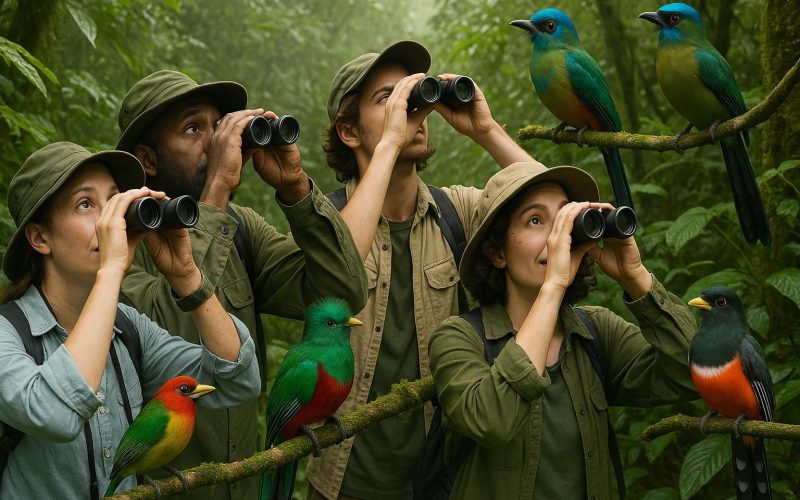Introduction to the Monteverde Cloud Forest
The Monteverde Cloud Forest, located in the heart of Costa Rica, is an ecologically rich area that captures the imagination of nature lovers, especially birdwatching enthusiasts. This forest is a remarkable example of a cloud forest, characterized by its unique climate and topography that create a haven for biodiversity. The constant veil of mist added by its elevation results in dense vegetation, thus supporting an incredibly diverse array of plant life. This large volume of greenery provides excellent coverage and habitat for birds, making it a prime location for ornithologists and hobbyists alike.
Flora Supporting Bird Habitats
One of the key ingredients for the thriving bird population in Monteverde is the extensive array of plant life found within its borders. The forest canopy is richly laden with epiphytes, such as orchids, bromeliads, and ferns, ensuring optimal nesting grounds for a multitude of bird species. This varied plant life not only provides physical nesting space but also fosters a habitat rich in insects and fruit, primary components of many birds’ diets. This richness in food supply is critical for sustaining bird populations year-round in Monteverde, offering a balance that is both ecologically and environmentally significant.
Notable Bird Species
Monteverde is home to over 400 species of birds, each contributing to the ecological tapestry of the forest. Birdwatchers visiting the forest are in for a treat, as they might encounter some of the following notable species:
Resplendent Quetzal: This bird is renowned for its striking green and red plumage. Its splendid appearance often serves as an indicator of a healthy and undisturbed forest ecosystem. Spotting a Resplendent Quetzal is a highlight for many birdwatchers visiting Monteverde.
Three-wattled Bellbird: Known for its distinctive call that can resonate across vast distances, the Three-wattled Bellbird is a fascinating species to observe. Its unique appearance, characterized by wattles hanging from its beak, combined with its extraordinary vocal capabilities, make it a subject of interest and study.
Emerald Toucanet: The Emerald Toucanet is another bird species that adds a splash of color to the forest with its combination of green and blue feathers and a prominent yellow bill. This bird can often be found at various heights across the forest, typically taking advantage of the dense canopy for both food and shelter.
Recommended Birdwatching Trails
To fully experience the avian wonders of Monteverde, several trails offer optimal birdwatching opportunities. The Sendero Tranquilo Reserve is particularly popular, giving birdwatchers access to multiple ecosystems along a single path. In addition, the Santa Elena Cloud Forest Reserve offers elevated viewing platforms that provide panoramic vistas of the forest canopy, allowing for an extraordinary birdwatching experience. These trails ensure that birdwatchers can observe a broad array of avian life while simultaneously enjoying the picturesque landscapes that Monteverde offers.
Conservation Efforts and Responsible Birdwatching
Conservation initiatives are fundamental to maintaining the Monteverde Cloud Forest’s biodiversity. It is crucial for birdwatchers and nature enthusiasts to practice responsible birdwatching habits to preserve the natural environment. This includes adhering to designated trails, keeping noise levels to a minimum, and avoiding disturbances to wildlife. The Monteverde Conservation League has been instrumental in protecting this delicate ecosystem. They actively engage in conservation projects and offer opportunities for visitors to participate and contribute to the preservation efforts.
In conclusion, birdwatching in the Monteverde Cloud Forest is more than just a hobby; it is a chance to immerse oneself within an extraordinary ecosystem teeming with life and activity. Observing the vibrant bird species within this lush paradise offers a profound understanding of the intricate balance of nature and the critical role conservation plays in sustaining such a diverse environment.
